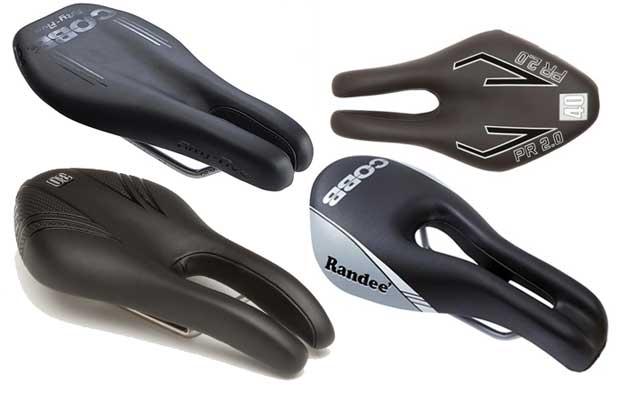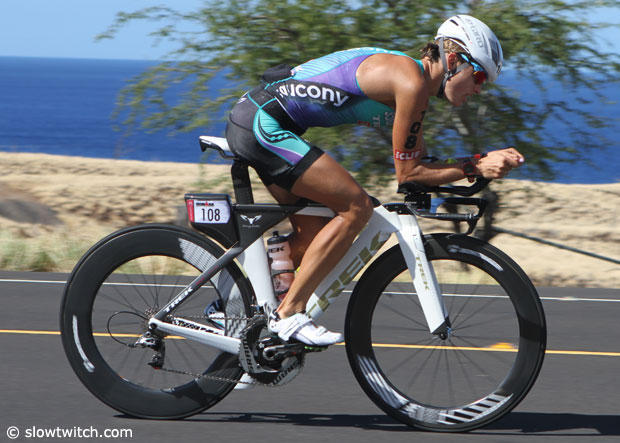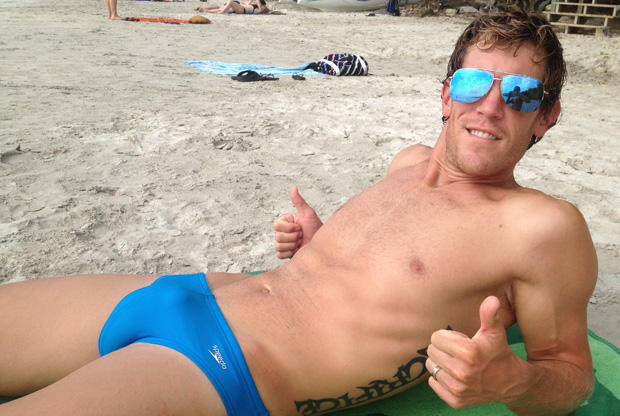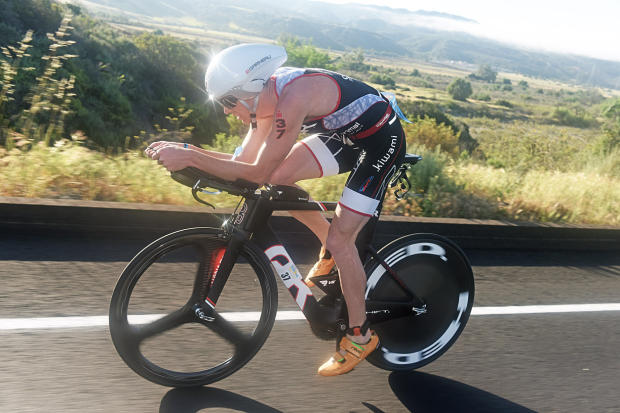For want of a saddle
I'll be teaching a F.I.S.T. Bike Fit Workshop at GURU's headquarters this upcoming Tuesday thru Thursday at GURU's Connecticut headquarters, aboard its equipment. A woman is driving up, 5 hours, to be a subject (victim) at this workshop, with surgeons (fitters) observing an operation from the gallery above the operating room.
She's driving up because she's uncomfortable. She can't get comfortable, either in her shoes or on her saddle. This is crazy to me because we've had aerobars for 30 years, and we've had cycling shoes for a lot longer than that. With today's modern technologies its unbelievable that we still can't find comfort.
I have described a process for quickly helping riders find the right saddle, which goes on at most Slowtwitch Road Shows by appointment, and this is a combo of technology and art. The art is in knowing how different saddles are to be positioned underneath a rider, and it seems a lot of fitters and athletes have not come to grips with this.

Let's take a Cobb V Flow (Plus or Max) as an example. You sit on this saddle. In fact, the first 2cm or 3cm behind the tip of the nose is depressed below the surface of the saddle, to form a scoop to draw air to cool your, er, coolable parts. This means the nose of that saddle needs to be 2cm or so forward of a traditional saddle (like a fi'zi:k Arione Tri 2).
Alternatively you've got a saddle like an ISM Road or Racing (or the new PR series, the marvelous PR 2.0 is upper right in the image above) that you don't ride this way at all. Most folks push (or should push) this saddle way back, so that the “nose” of that saddle is 5cm, 6cm, even 8cm behind the nose position of a standard saddle. You rest your ischeal tuberosities (sit bones) on the nose(s) of this saddle and you ride commando from there forward. The downside is that you've got pressure on your ischeal tubes. The positive is that you don't have any pressure on your perineum (taint) or your soft tissue (we have various terms for this in the world of bike fit, and are always searching for the most descriptive yet least off-putting).
Do fitters, consumers, and even professional athletes really understand how far forward a split-nose saddle pitches the rider forward? Sometimes yes, sometimes no.
We took a poll here a year ago, asking this question. We're taking the poll again now. Here were the results then, and now (to date).
"When you changed to a split-nose saddle (e.g., ISM) you moved your saddle nose back how far versus your old standard saddle?"
0cm: Was: 9%, Is: 26%
1-2cm: Was: 6%, Is: 5%
3-4cm: Was: 9%, Is: 9%
5-6cm: Was: 6%, Is: 6%
7-8cm: Was: 1%, Is: 4%
Other: Was: 1%, Is: 1%
No idea: Was: 30%, Is: 19%
I don't ride a split-nose saddle: Was: 38%, Is: 23%
"Was" is how readers answered this question during the last week of March, 2015. "Is" represents the poll results in the last week of March 2016.
What is notable to me is:
1. Many more people are moving to a split-nose saddle;
2. Many of those moving do not realize how these saddles should be ridden; or they're riding the saddle the correct way and are getting pitched way forward as a result.

No one is going to call me grouchy or retro when it comes to seat angles. When I produced an 80-degree bike in 1989 just for triathlon this was considered silly steep. Crazy. But this Quintana Roo Superform was ridden to a ridiculously fast bike split in its debut race by Ray Browning in the 1989 Ironman New Zealand and in the intervening years this geometry has become a template for tri bikes since. It might be strange to read me write about too steep, but there is such a thing, and in some cases I think it's the unwitting placement of a split-nose saddle on a seat post without proper care given to where this saddle should be spotted fore/aft.
This can be written without readers' hand-wringing as long as I don't point out examples. So I'm going to pictorially point out examples (of course!).
When I look at the positions of most of the riders in the top-15 in the Ironman in Kona I have pretty much no complaints except a bit with Tyler Butterfield and a bit with Lionel Sanders, though the latter has acknowledged this, and worked on his position, and we have a vibrant Reader Forum thread on how Lionel has addressed this.
Now, look, for you who're going to say, “How dare you criticize someone who's reached such a pinnacle of success?” may I remind you that Lionel was very successful on his prior position which he himself acknowledged as sub-par!
Further, I was at a presentation given by Mark Allen last year at Cervelo's Brain Bike, and Mark showed to the audience a number of images of his own riding position. Paraphrasing, his presentation was, “Look how the position improved from 1989 through 1995.” He finally got it right in ‘95. Had I criticized his position in 1989 can you imagine the ration I'd have taken?” But Mark himself sees in retrospect that ‘89 position as unoptimized.

The delta I see is between the apparent seat angle (or hip position) of the men versus the women. No real issue with the men. But many top women seem to me pitched forward. You can go down the line and with the notable exception of Daniela Ryf over half these women are riding steeper than I would like them to ride. Why?
Two reasons. First, women were the early and eager adopters of split-nose saddles and I think in some cases their fitters just didn't reckon on how far back these saddles needed to be positioned to normalize for how differently these saddles are sat.
Second, some of the bikes they ride can't be, or aren't, adjusted properly in the cockpit, so these women move forward to achieve a proper shoulder angle.
But this second reason doesn't wash in many cases because we see that the shoulder angle is often too acute. There isn't enough cockpit distance. The most logical explanation is that the saddle pushes the rider too far forward. It isn't always the culprit of the split-nose saddle. The bottom picture here is of a rider who is riding a Cobb V-Flow and that saddle, as described above, does not pitch a rider forward as do most of the split-nosed saddles.
Here is a Google Doc from David Bowden down in New Zealand. He's truly one of the great minds in bike fit today and this is the best normalizing cheat sheet I've found. It rings true.
As we see from David's cheat sheet, there is not a fixed amount we move split-nosed saddles rearward. For example, Cobb's 55 is named for its width, and John Cobb contents that you sit this 55mm-wide saddle a little more on it than in front of it, and this means the saddle (according to John) should not be pushed back as far as a 70mm saddle, which is a typical ISM width. In an upcoming installment we'll look at each of the popular saddle brands and their saddles closely.
For want of a saddle the position was lost. For want of a position the bike was lost. For want of a bike the race was lost.




Start the discussion at slowtwitch.northend.network